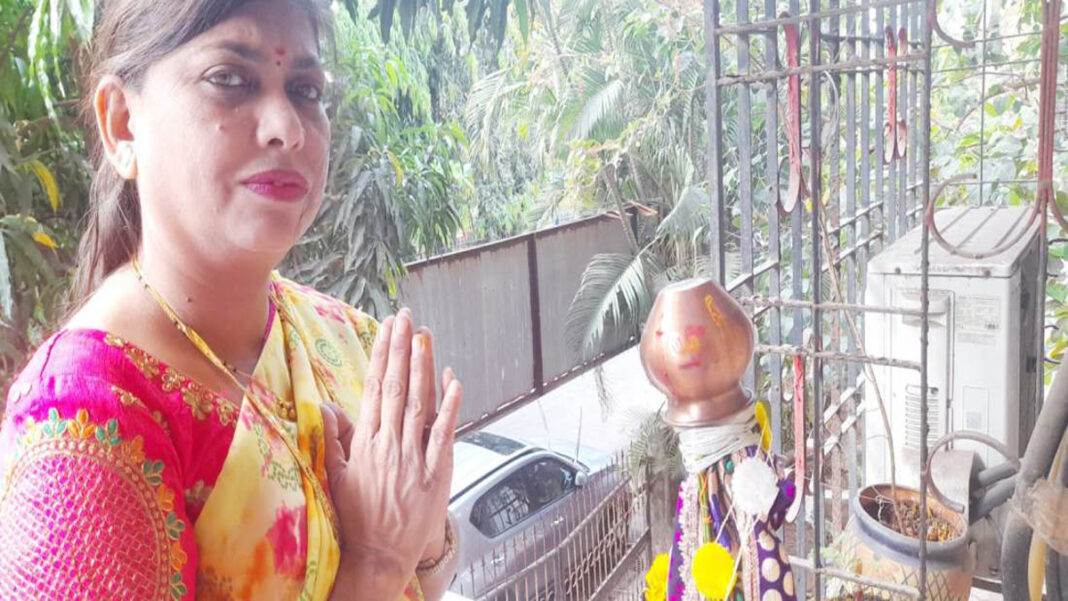INDIA. Mumbai: Gudi Padwa, a springtime festival that marks the traditional new year for Hindus, was celebrated with gusto and jubilation on March 22 in Maharashtra, Goa, Madhya Pradesh, the union territories of Dadra and Nagar Haveli and Daman and Diu, and other parts of the country.
“Gudi Padwa” marked the new year, “Shalivahan Shaka 1945,” the first day of the “Chaitra” month (the first day of a lunar fortnight) of the Hindu calendar. As per Hindu mythology, Lord Brahma created this universe and introduced to the world the concepts of years, months, weeks, and days on Gudi Padwa.
Gudi Padwa is celebrated to mark the victory of Emperor Shalivahan over the demon Shakas and his return to his native Pratishthana (present-day Paithan in Aurangabad in Maharashtra).
Some people believe that the Gudi Padwa is celebrated to mark the return of Lord Ram to Ayodhya (Uttar Pradesh) after 14 years of exile. The day is considered one of the three and a half auspicious “muhurats.”
In Mumbai and other parts of Maharashtra, the “Gudhis” were raised to ward off evil and invite prosperity. The “Gudhi” is considered the flag of Lord Brahma. It is made by tying a piece of fresh cloth around a bamboo stick, and Neem leaves and a garland made of sugar candy are placed atop it. A bronze, copper, or silver pot or Kalash is capped on top.
Archana Mokale, a housewife in Andheri in North West Mumbai who spoke to the “Transcontinental Times,” said that they have been raising the “Gudi” for the last several years, the tradition that she adopted since her childhood days in Yavatmal district in Vidarbha. In villages, special food is offered to cows and other animals connected with farming.
The celebrations of Gudi Padwa include a ritualistic bath and the decoration of a doorway with rangoli and toran (an entrance arch) made of mango leaves and marigold flowers. The people visit temples to offer prayers.
On this occasion, a sauce (chutney) made of bitter Neem leaves is consumed since it is considered a healthy practice right from the first day of the newly begun year. The neem leaves are known to destroy the bacteria that cause infections, stimulate the immune system, and encourage rapid healing.
As part of the festival, shobha yatras (parades), floats, and cultural programs were organized. The women wearing nine-yard sarees, sporting saffron headgear, and riding motorbikes, accompanied by dhol-tasha bands, lent an air of festivity.
The Shobha yatras, accompanied by lezim, were organized in Dadar, Vile Parle, and neighboring Thane and Dombivali. The lezim dancers carry a small musical instrument with jingling cymbals called the “lezim.”
Ahead of the BMC polls, the BJP used the festival to maximize its outreach among the Marathi-speaking population and directed its estimated one lakh workers to hoist gudis on their houses across Mumbai.
The Gudi Padwa is celebrated with different names across India. It is known as “Bihu” among the Assamese of Assam, “Cheti Chand” among the Sindhi people, “Navreh” among the Kashmiri Pandits in Jammu and Kashmir, “Pahela Baishakh” among the Bengalis in West Bengal and Bangladesh, and “Puthandu” among the Tamils in Tamil Nadu.
It is also called “Samvatsar Padvo” among Hindu Konkanis of Goa and Konkani diaspora in Kerala, “Baisakhi” among the Punjabis in Punjab, “Vishu” among the Malayalis in Kerala, and “Ugadi” among the south Indian states of Karnataka, Andhra Pradesh, and Telengana. It is also celebrated as “Sajibu Nongma Panba Cheiraoba” in countries like Nepal, Myanmar, Cambodia, and other nations where there are a lot of Hindus, like Singapore and Malaysia.
Also Read: Music Festivals to Attend in India and Spain in 2023



